Featured Comment:
“I was surprised how good the result was. I didn’t curl the chashu and I used instant dashi. Also I cooked the chicken I used for the broth first got rid of the scum and then put it in the dashi to cook”
– Ric
What is Shoyu Ramen?
Shoyu ramen is a type of ramen that was created in Japan and uses soy sauce for the tare (sauce). It’s often referred to as “chuka soba” as well. Compared to other types of ramen, it is the most rustic and classic.
However, the broths nowadays vary considerably from restaurant to restaurant, ranging from light soups with a chicken or vegetable broth base to thicker ones made with pork bones.
Just so you know, the soup of this recipe is made with a base of chicken wings and dashi together; it heavily follows the fundamentals of classic shoyu ramen rather than the contemporary ones with a twist. Because I make soup and tare from scratch, it does take time, but I made it so that the actual process is fairly simple!
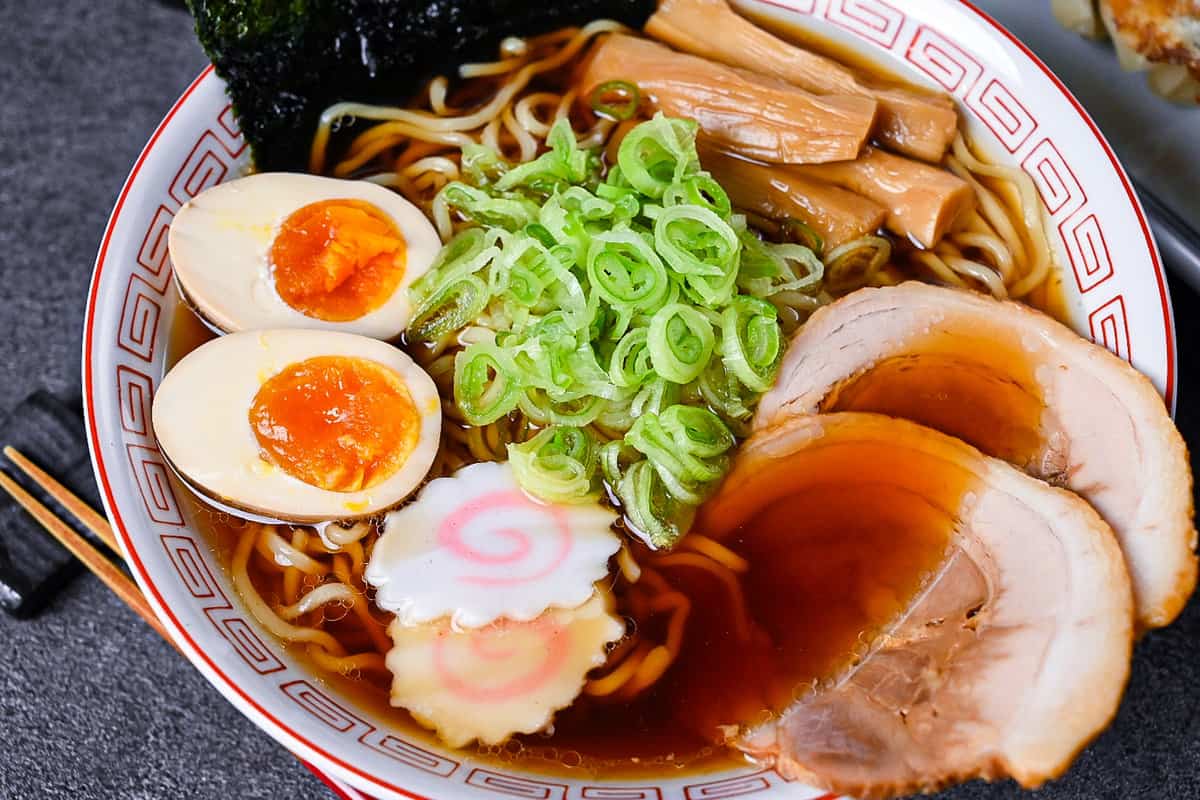

How I Developed This Recipe
Living in Japan, ramen is typically a dish best enjoyed at a ramen restaurant, mainly due to the time-consuming process of making authentic soup and sauce.
However, my experience living in England revealed the challenge of finding affordable, authentic ramen, which was mostly available at high prices in London. This motivated me to develop a classic soy sauce ramen recipe that simplifies the process while retaining authentic taste.
Through significant improvements to the dashi and chicken-based broth, I’ve managed to create a delicious and more accessible version of this beloved classic!
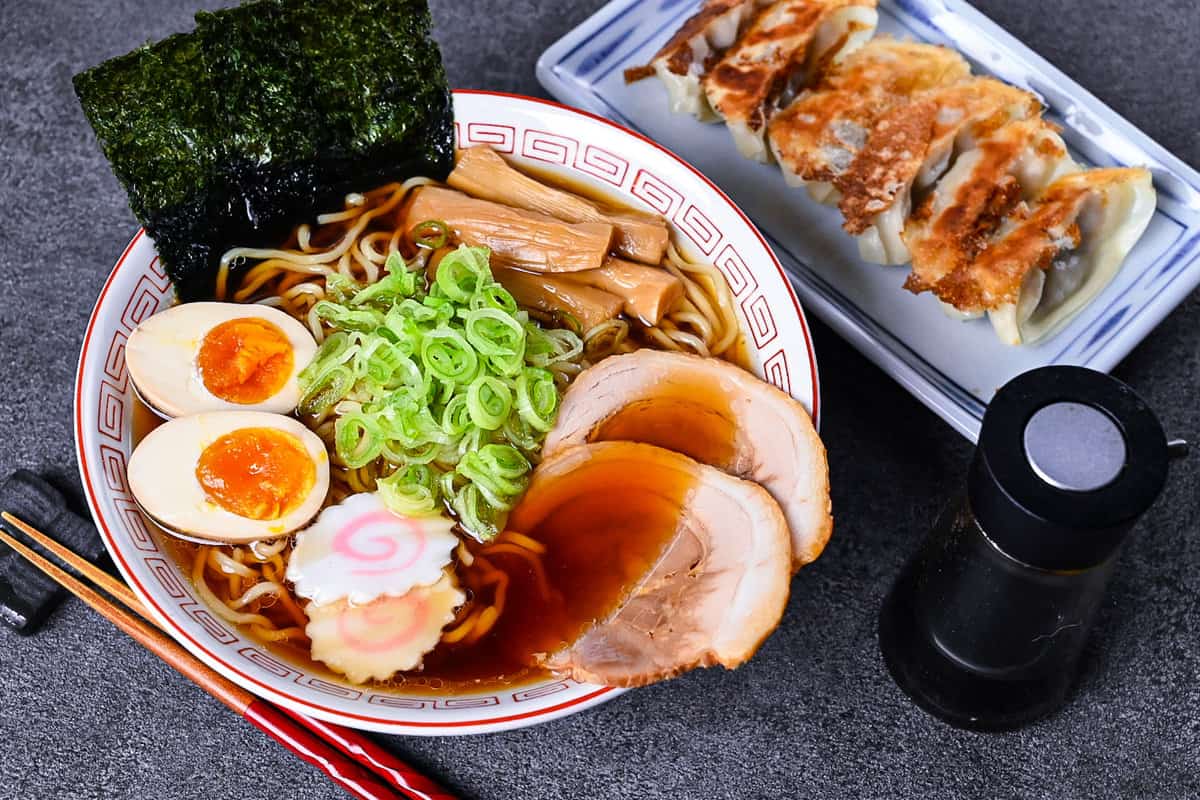
Ingredients & Substitution Ideas
- Ramen Noodles: For the best experience, try making your own homemade ramen noodles to get the perfect texture and taste. If you can’t get fresh noodles, think about buying quality store-bought noodles (like the one in my storefront below) or try my Spaghetti Ramen Hack for a similar but easy way to make it with pasta you probably already have.
- Broth Ingredients: Create a rich base using water, chicken wings, dried sardines (niboshi), bonito flakes (katsuobushi), dried kelp (kombu), fresh ginger, garlic, and Japanese leeks (naganegi).
- Tare Ingredients: A flavorful blend of lard, chicken skin, soy sauce, mirin, sake, sugar, and salt.
- Topping Suggestions: You can customize your ramen bowl with an array of delicious toppings. Some traditional options include pork chashu (braised pork belly), ramen eggs (or simple soft-boiled eggs), seasoned bamboo shoots (menma), narutomaki fish cake, crisp sushi nori seaweed, and finely chopped green onions.
While it’s best to follow the broth recipe closely for the most authentic flavor, feel free to experiment with the toppings based on what’s available and your personal preference. Here are a few flexible substitution ideas:
- Chicken breast: If pork chashu isn’t your thing, chicken topping is a great alternative! Check out the “salad chicken” section of my chicken salad recipe or chicken chashu.
- Fried/oven baked pork: I do understand making pork chashu from scratch takes a lot of time. If you still want to use pork, consider frying or baking pork belly with marinade. I have a no-fuss oven-baked pork belly recipe specifically for ramen!
- Soft-boiled egg: ramen eggs are preferred, but you can simply use soft-boiled eggs instead of ramen eggs. Simply cook eggs in boiling water for 7-8 minutes.
- Boiled spinach/pak choi: it’s hard to substitute menma, but if you replace menma with something else, you can add boiled spinach or pak choi for topping. You can find how to prep spinach in this Japanese sesame spinach salad recipe.
- Fried beansprouts: Another additional topping option is fried beansprouts. Simply stir-fry them with a bit of salt and pepper and place them on top of your ramen!
Curious about the exact brands and products that bring my recipes to life? Discover the brands and ingredients behind my recipes at the Sudachi Amazon Storefront. Explore my handpicked pantry essentials and find your next kitchen favorites!
Jump to Full Recipe Measurements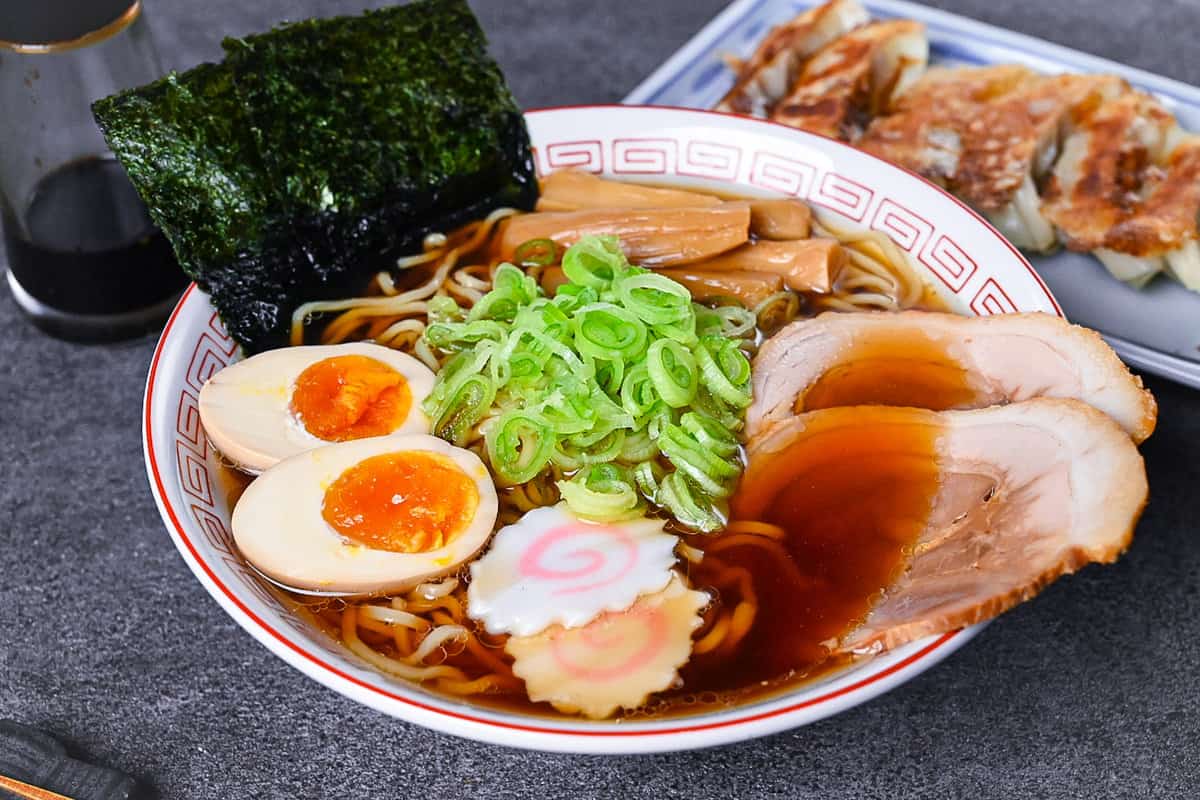
Visual Walkthrough & Tips
Here are my step-by-step instructions for how to make Shoyu Ramen at home. For ingredient quantities and simplified instructions, scroll down for the Printable Recipe Card below.
I like to use my favourite awase dashi broth for this recipe. It’s super easy to do and adds depth to the broth, but feel free to use premade dashi or dashi powder if you prefer to speed things up.
Start by soaking dried sardines (niboshi) and dried kelp (kombu) in water for 30 minutes.
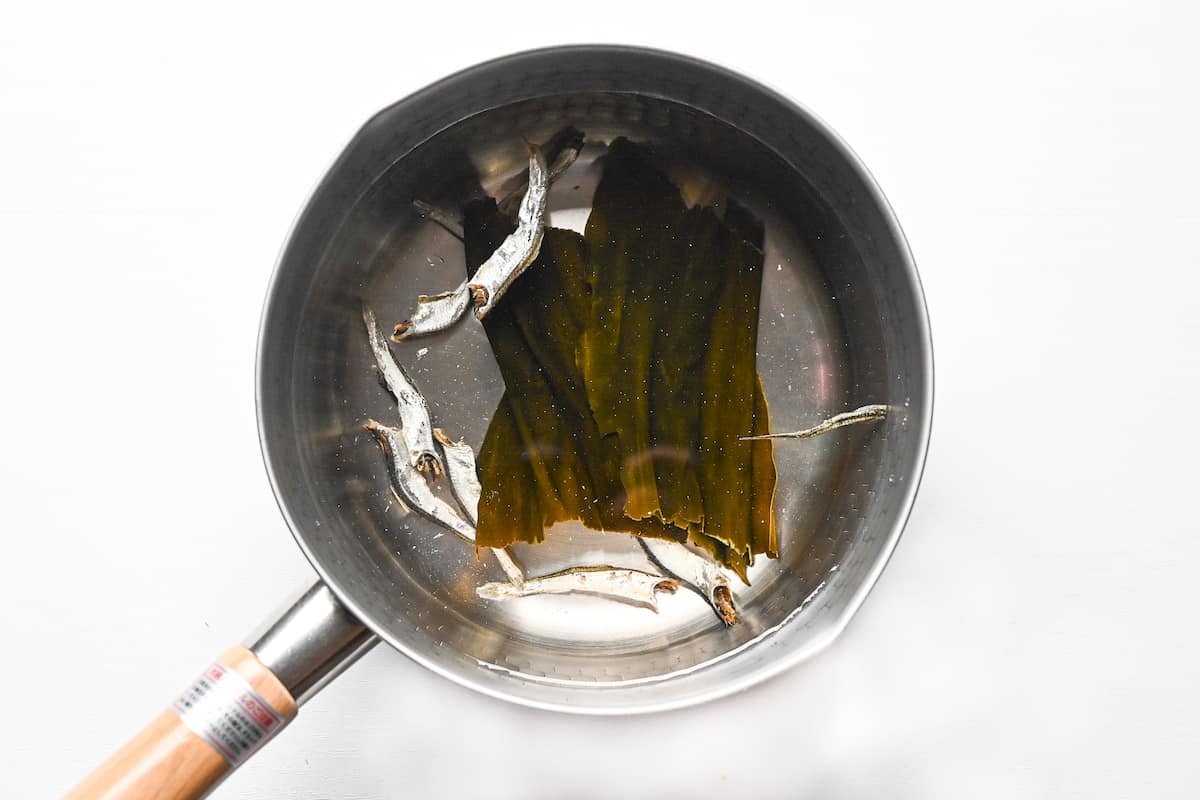
After 30 minutes, place the pan on the stove and then bring to almost boiling over a medium heat.
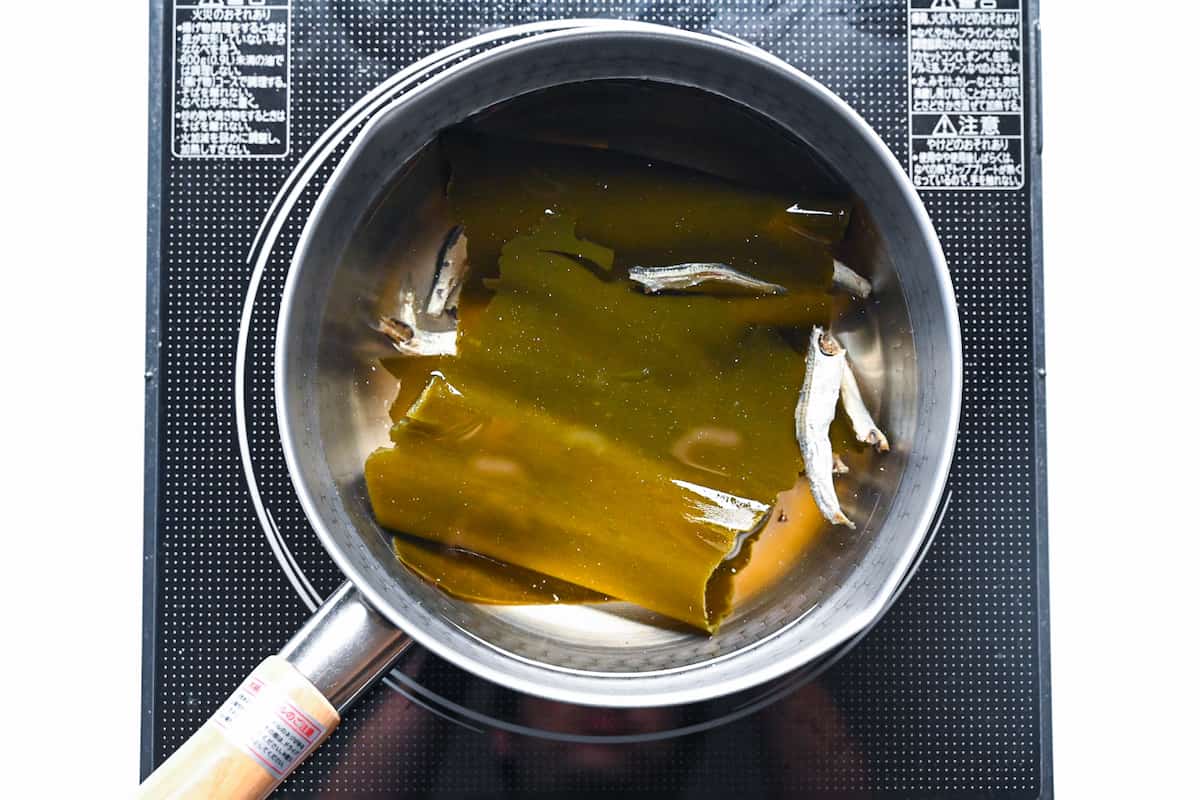
Once the broth is almost boiling, turn the heat down to a simmer and add bonito flakes (katsuobushi), spring onion, chicken wings, fresh ginger and garlic cloves to the broth and simmer for 30 minutes. This will make a complex yet light broth that is rich in flavor.
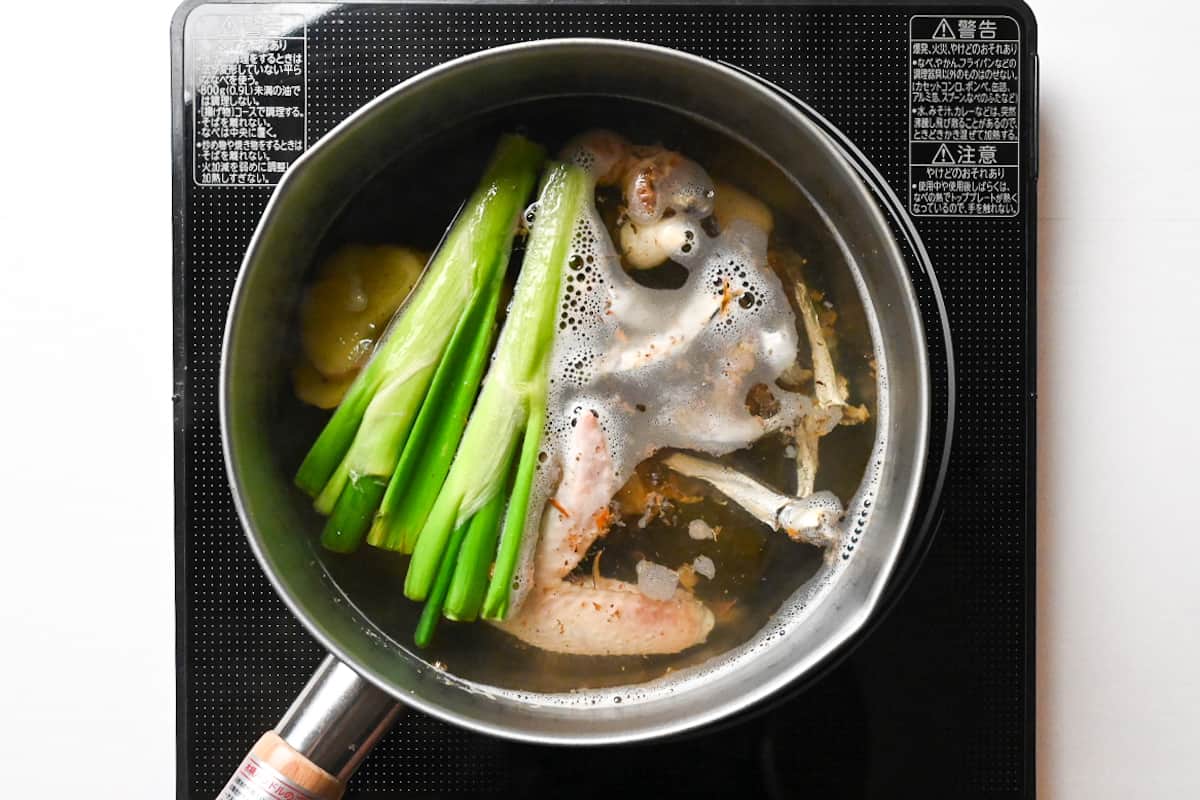
After 30 minutes of simmering, pour the broth through a sieve lined with kitchen paper placed over a large heatproof mixing bowl.
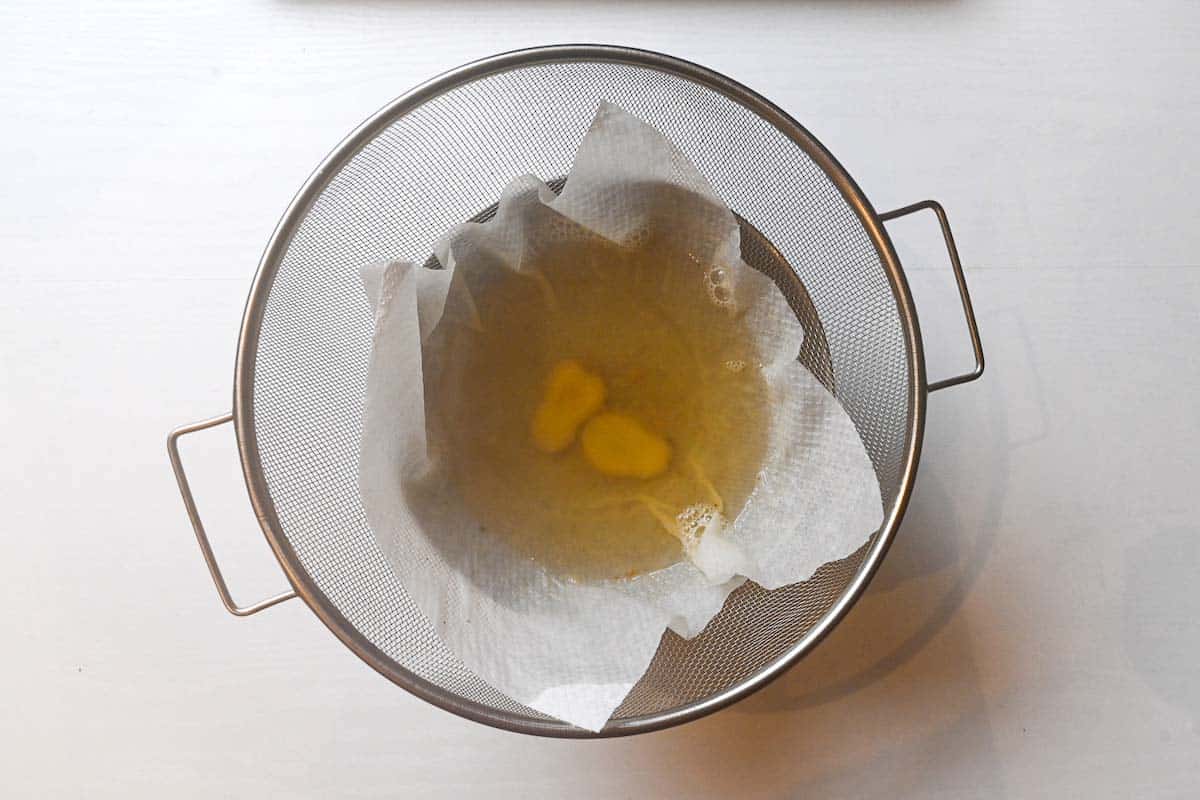
You should be left with a beautiful clear and golden broth like this.
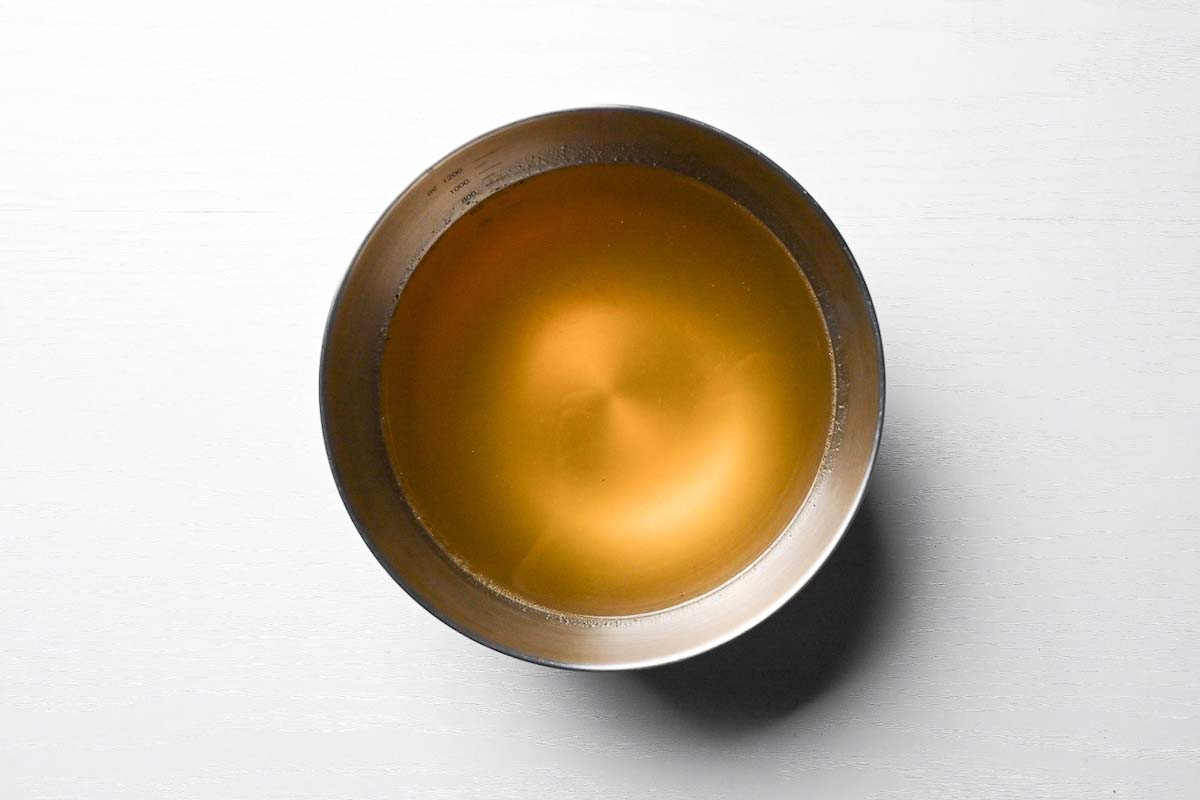
Set aside for later and reheat right before serving.
When making the tare (sauce) I like to render chicken skin so that the fat comes out and adds more flavor to the overall dish. Start by heating a small pan on low/medium-low and add lard. Once it has melted, add the chicken skin.
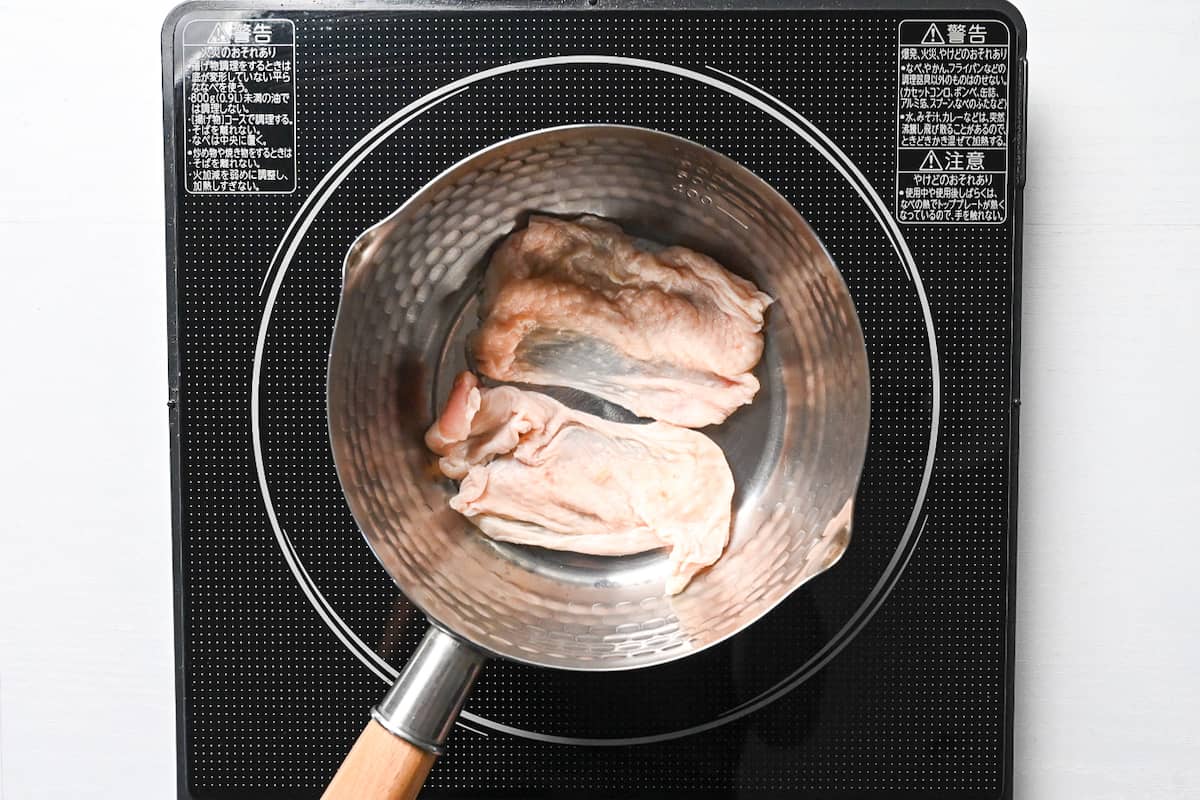
Fry the chicken skin until crispy/browned on both sides and the fat has rendered out. This usually takes about 10 minutes.
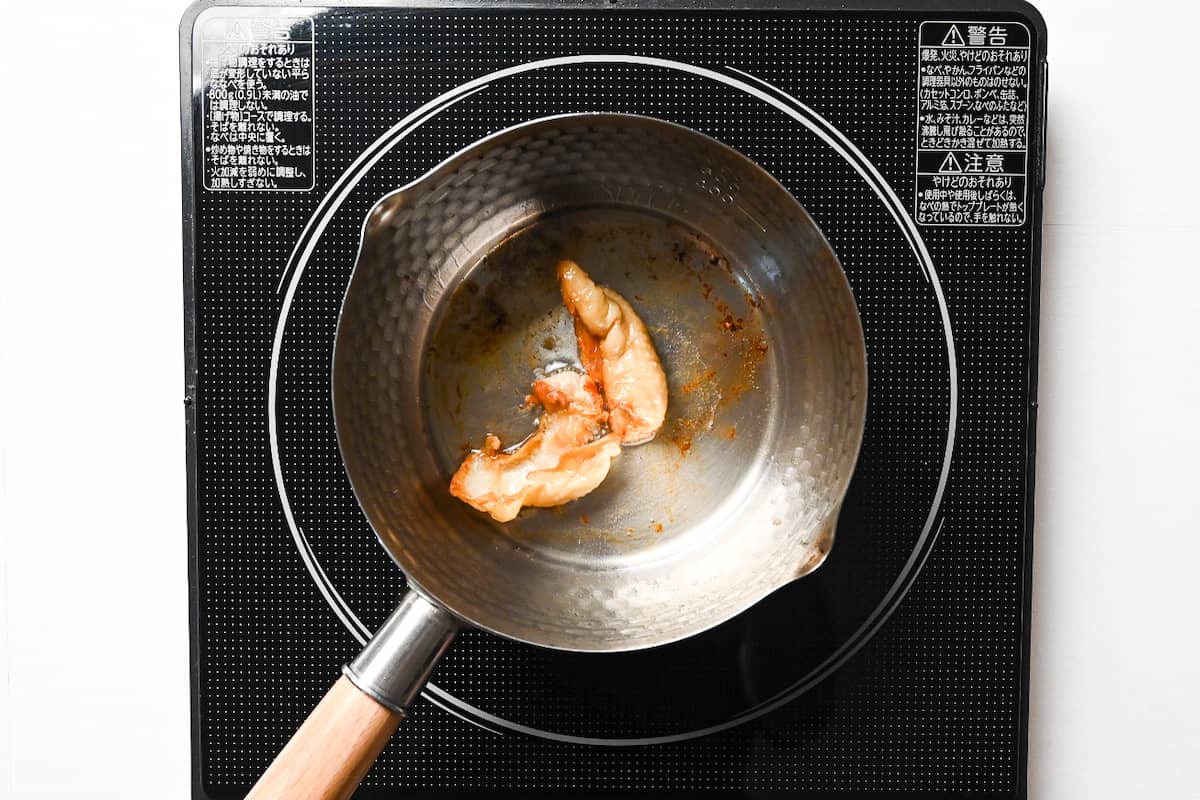
Once the fat has rendered out, remove the chicken skin. I love crispy chicken skin, so once it’s cooked, I like to just eat it as it is, but you can also cut it up and use it as a ramen topping if you like!
Making a tare is an essential step when making ramen. As this is “shoyu” ramen, the tare is mainly flavoured with soy sauce.
To make the tare, add soy sauce, water, sake, mirin, sugar and salt to pan with the chicken fat. Simmer the tare for 15 minutes to reduce it down until it’s thick and glossy.
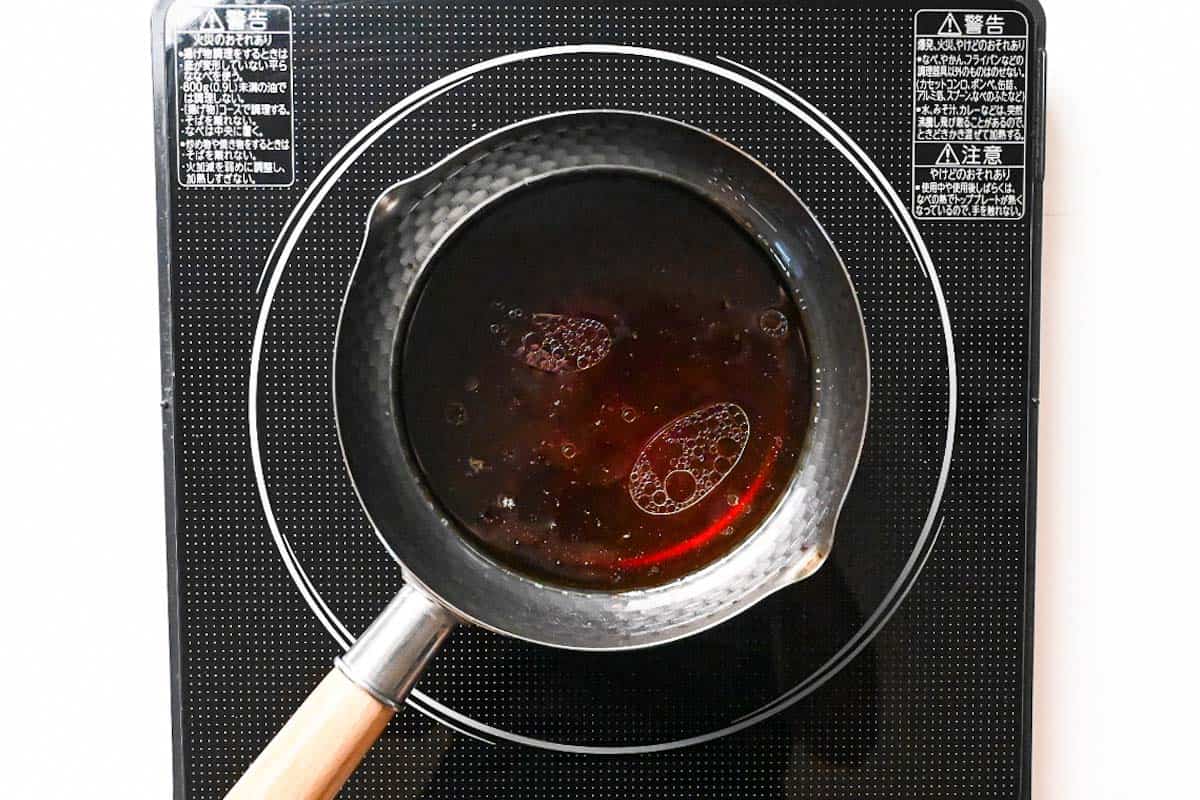
Once it’s done, divide it into your serving bowls. Alternatively, you can leave it to cool and store it in the fridge until it’s time to use it.
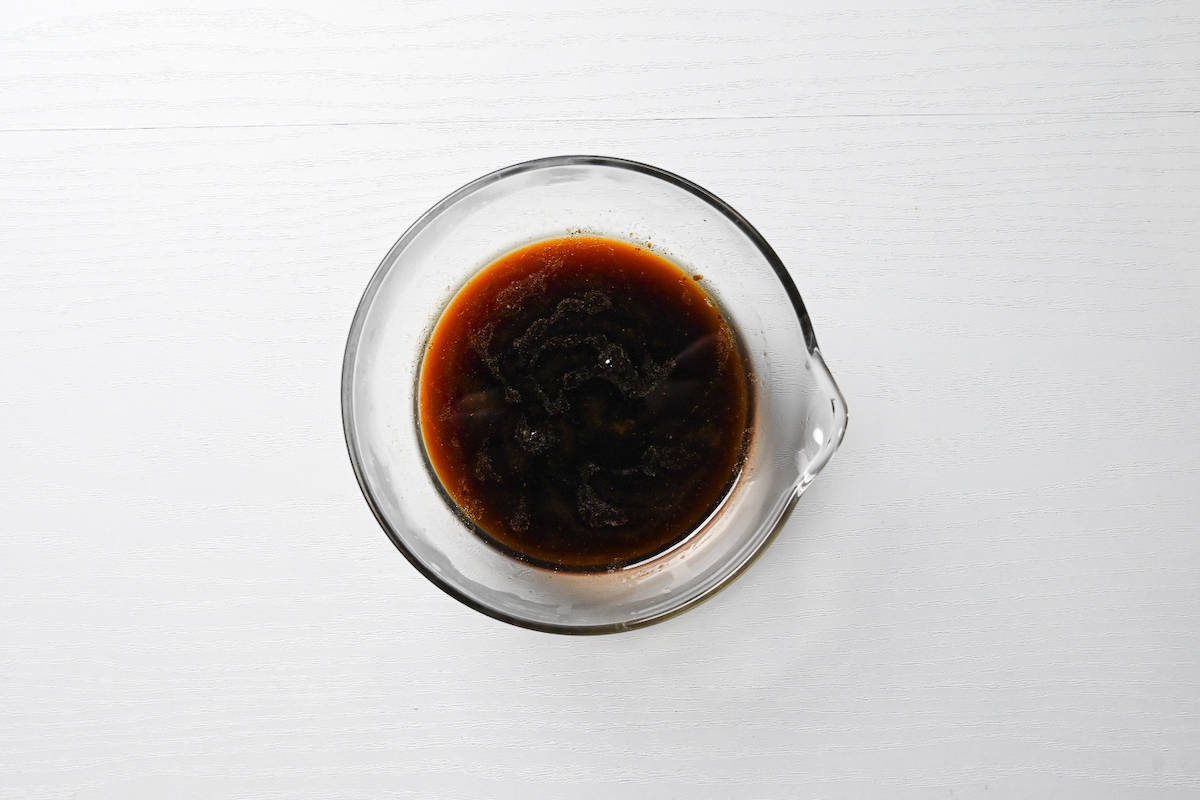
The order in which the ramen is assembled is pretty straightforward. You start by dividing the tare between the bowls. My recipe makes two portions, so simply half it for each bowl. If you’re making multiple portions, then you will need to multiply the recipe and then divide the tare accordingly.
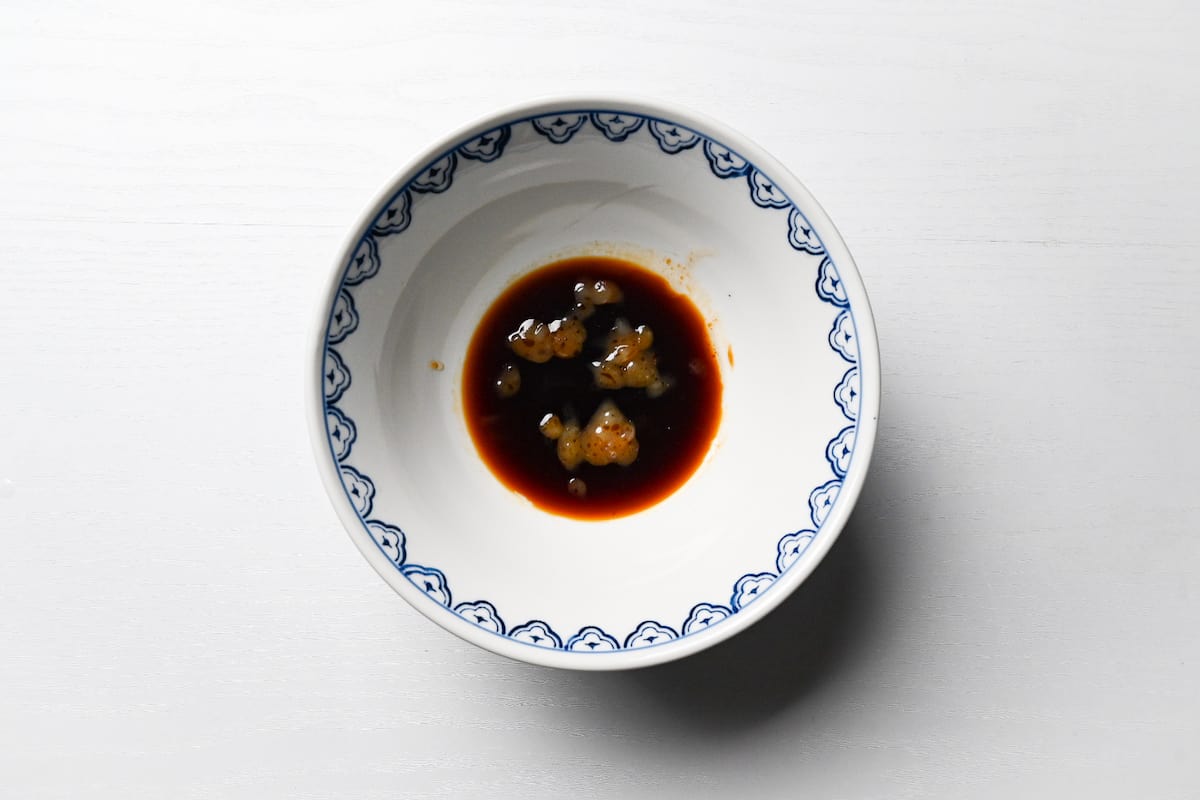
Next, add 300ml of broth to each bowl and mix it with the tare. The broth will be reduced after simmering, but you might still have some leftovers. You can store this in the fridge and use it for next time.
I recommend using it up within a week. Don’t be tempted to use more than 300ml of broth per serving; otherwise, the tare-to-broth ratio will be unbalanced.
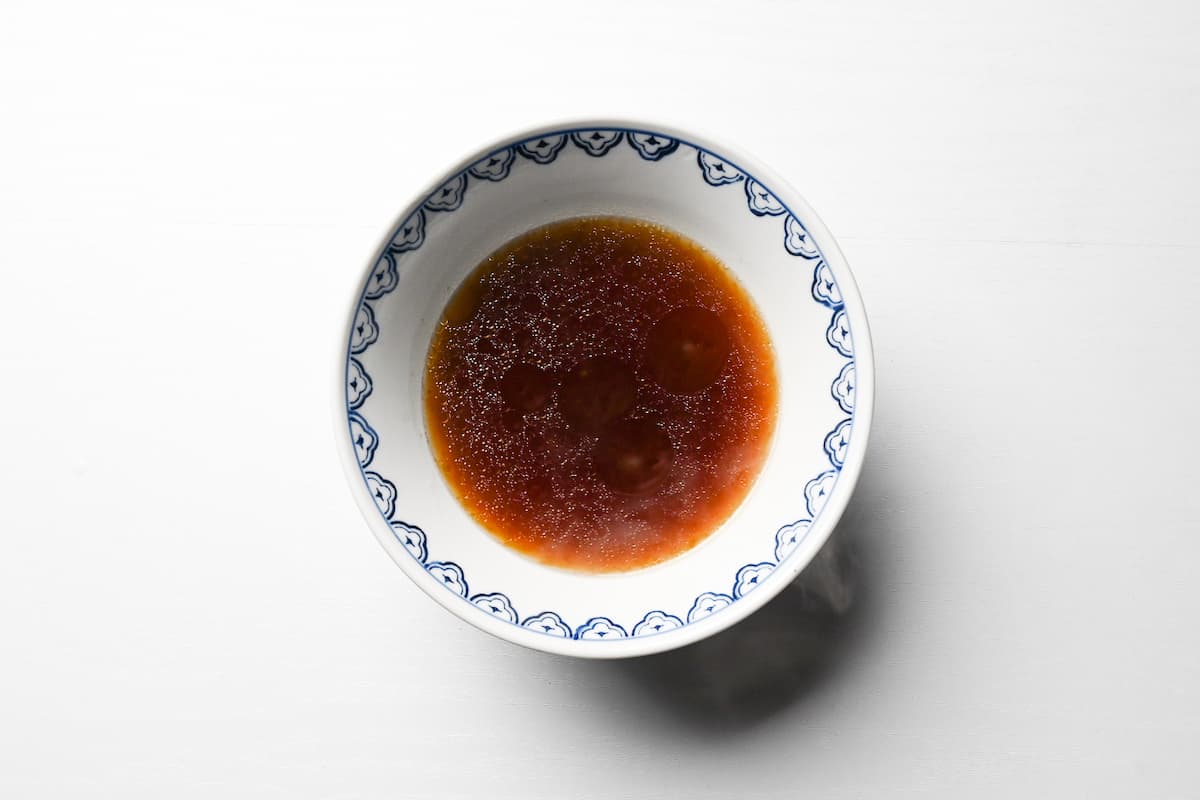
Cook your ramen noodles in a separate pot and follow the instructions on the packaging. Drain the water and place the noodles in the broth.
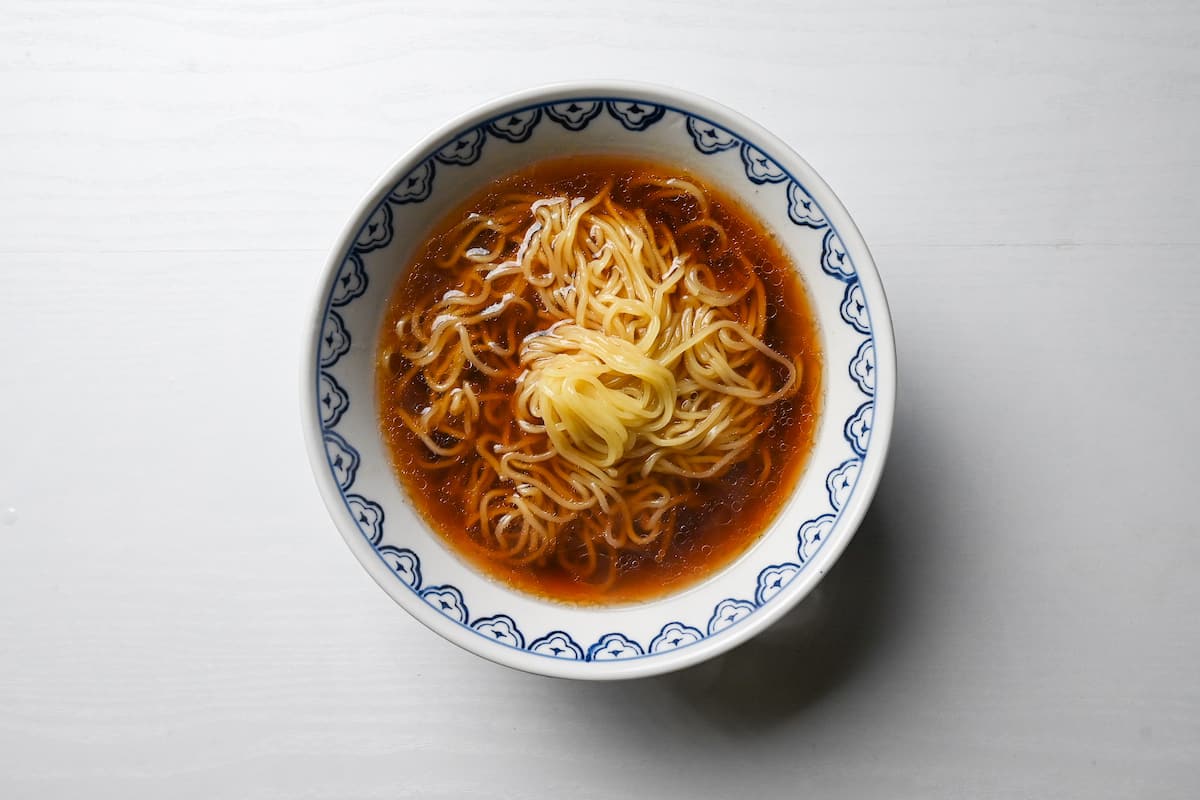
Finally, top with your favourite ramen ingredients and enjoy this authentic Japanese shoyu ramen at home!
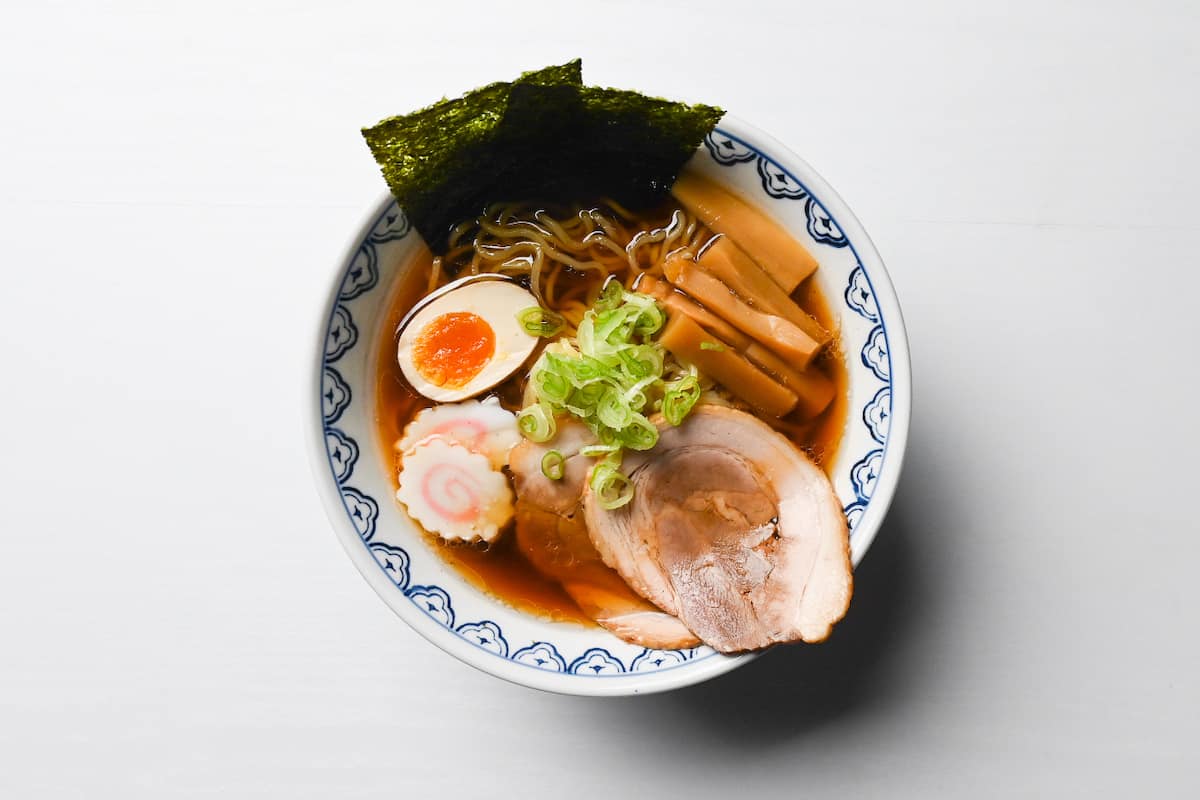
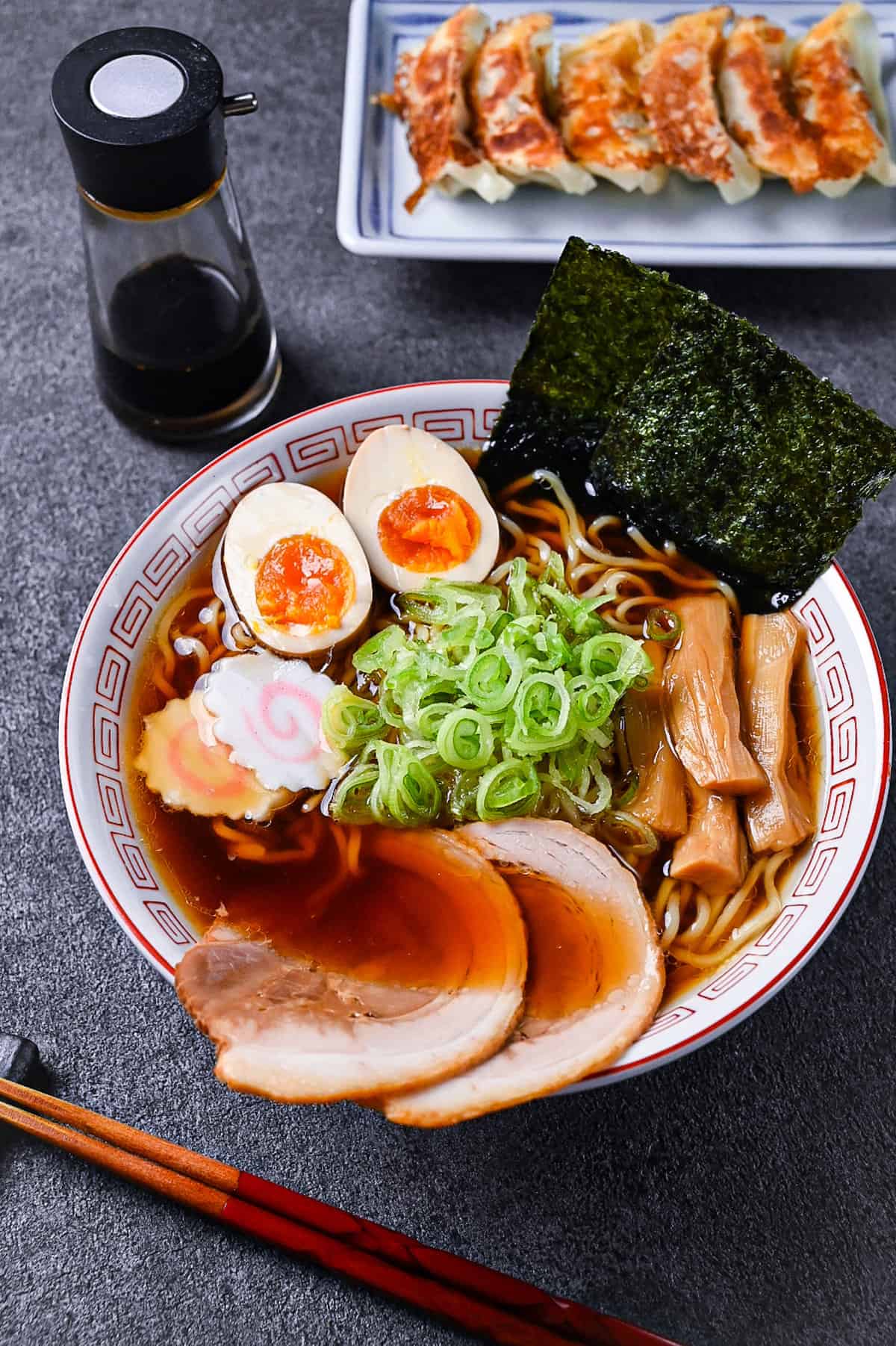
FAQ
Long story short, it is said that the shoyu ramen served at Rairaiken (來々軒) in Asakusa, Tokyo in 1910 was the first shoyu ramen in Japan. At the time, it was called “Tokyo Ramen,” and Tokyo Ramen is still popular as a local ramen to this day. Like shio ramen, shoyu ramen, which can be called the prototype of Japanese ramen, has a longer history than other types of ramen.
Because of its long history, there are many regional ramen dishes based on shoyu ramen throughout Japan such as:
Asahikawa ramen (旭川ラーメン) in Hokkaido
Tsugaru ramen (津軽ラーメン) in Aomori Prefecture
Hachioji ramen (八王子ラーメン) in Tokyo
Toyama black ramen (富山ブラック) in Toyama Prefecture
Takayama ramen (高山ラーメン) in Gifu Prefecture
Banshu ramen (播州ラーメン) in Hyogo Prefecture
Onomichi ramen (尾道ラーメン) in Hiroshima Prefecture
…and many more!
As you might already know, Japanese ramen roughly has 4 different kinds:
Shoyu (soy sauce)
Miso
Shio (salt)
Tonkotsu (pork bones)
Each term refers to the base of broth, and every ramen restaurant (except for big chains) specializes in one of them. I know there are more kinds out there in Japan, but the list goes on and on, so I just stop with these 4 main types.
Shoyu ramen broth is soy sauce-based, while Miso ramen uses a miso base. Shio ramen has a salt base, and Tonkotsu ramen features a pork bones base. In terms of popularity, Shoyu ramen enjoys medium popularity. Miso ramen is highly popular, contrasting with Shio ramen, which is less popular. Tonkotsu ramen, like Miso, is also highly popular. Regarding homemade difficulty, Shoyu and Shio ramen are moderately easy to make, Miso ramen is easy, and Tonkotsu ramen is very hard to prepare at home.
These are just based on my experience of having had ramen for +25 years, but at the end of the day, it’s all down to personal preference. However, one thing I can say for sure is that making tonkotsu ramen at home is extremely time-consuming.
So, if you want to try to make ramen at home, I recommend using this shoyu ramen recipe or my other miso ramen recipe (which is a lot easier).
My other ramen recipes:
Easy Pork Miso Ramen
Easy 15 min Tantanmen Ramen
Abura Soba (Soupless Ramen)
Spicy Nagoya Style “Taiwan Ramen”
Nagasaki Champon Noodles (Ringer Hut Style)
Although I have explained the different types in my experience above, I thought I should include a third-person view in it. Here is the ranking based on 510 people in Japan according to Mynavi News (2020):
Shoyu: 26.5%
Miso: 25.3%
Tonkotsu: 22.5%
Shio: 12.9%
Others: 12.8%
As I expected, there is no clear winner for ramen preference in Japan. Shoyu, miso and tonkotsu ramen are more or less equal. For example, if I had to pick my favorite, I’d choose miso, but I still eat shoyu, tonkatsu, or shio when I feel like it. In other words, they’re all pretty equal in popularity.
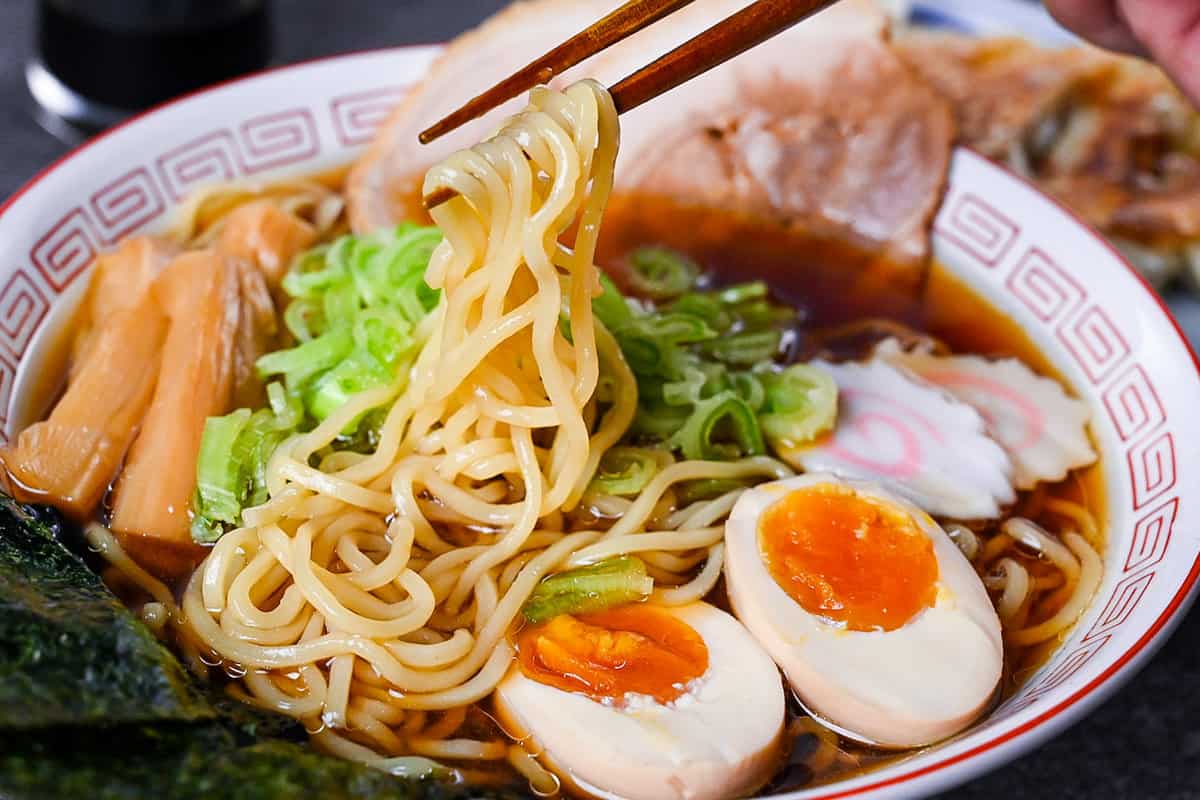
I hope you enjoy this Homemade Shoyu Ramen recipe! If you try it out, I’d really appreciate it if you could spare a moment to let me know what you thought by giving a review and star rating in the comments below. It’s also helpful to share any adjustments you made to the recipe with our other readers. Thank you!
More Authentic Ramen Recipes
- Chicken Shio Ramen (Salt Base Broth)
- Abura Soba (Soupless Ramen)
- Tantanmen (Tan Tan Ramen) in 15 Minutes
- Pork Miso Ramen in 15 Minutes (Sapporo Style)
Want more inspiration? Explore my Ramen Recipe Roundup for a carefully selected collection of tasty recipe ideas to spark your next meal!
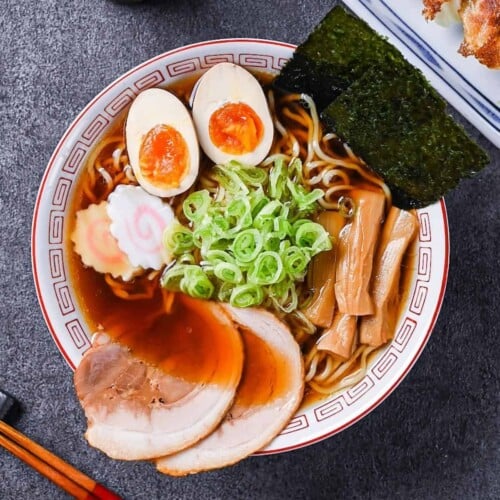
Homemade Shoyu Ramen Noodles (Soy Sauce Flavored Chuka Soba)
Equipment
- Noodle strainer
Ingredients
- 2 portions ramen noodles
Broth
- 1000 ml water
- 3 chicken wings
- 10 g dried sardines (niboshi) niboshi
- 15 g bonito flakes katsuobushi
- 10 g dried kelp (kombu) kombu
- 20 g ginger root
- 2 cloves garlic
- 50 g Japanese leeks (naganegi) green part
Tare
Topping suggestions
- pork chashu braised pork belly
- ramen egg or soft boiled eggs
- seasoned bamboo shoots (menma) menma
- narutomaki fish cake narutomaki
- sushi nori seaweed nori
- finely chopped green onions
Instructions
Broth
- Pour 1000 ml water into a large pot and add 10 g dried kelp (kombu) and 10 g dried sardines (niboshi), soak for 30 minutes. After 30 minutes, place the pot on the stove and heat on medium. Heat to almost boiling.

- Once it's almost boiling, turn the heat down to simmer and add 3 chicken wings, 15 g bonito flakes, 20 g ginger root, 2 cloves garlic and 50 g Japanese leeks (naganegi). Simmer for 30 minutes. (While it's simmering you can work on the tare steps below.)

- When 30 minutes have passed, pour the broth through a sieve lined with kitchen paper.

- The completed broth should be golden and clear.

Tare
- Heat a small sauce pan on low/med-low and add ½ tbsp lard. Once it's melted, add 50 g chicken skin.

- Fry the chicken skin until crispy/browned on both sides and the fat has rendered out, this typically takes about 10 mins.

- Remove chicken skin (you can eat it or use it as topping), then add 100 ml water, 50 ml soy sauce, 1 tbsp sake, 1 tbsp mirin, ½ tsp sugar and 1 pinch salt to the pan. Simmer for 15 mins.

- Divide into two bowls or allow to cool and store in the fridge until you are ready to use it.

Assembly
- Cook 2 portions ramen noodles according to the instructions on the packaging.

- Add half of the tare to each of the two bowls. (If you increase the recipe, divide accordingly.)

- Add 300ml of hot broth to each bowl and mix.

- Drain the water from the cooked ramen noodles and place an equal portion in each bowl.

- Add the toppings of your choice.

- Enjoy!

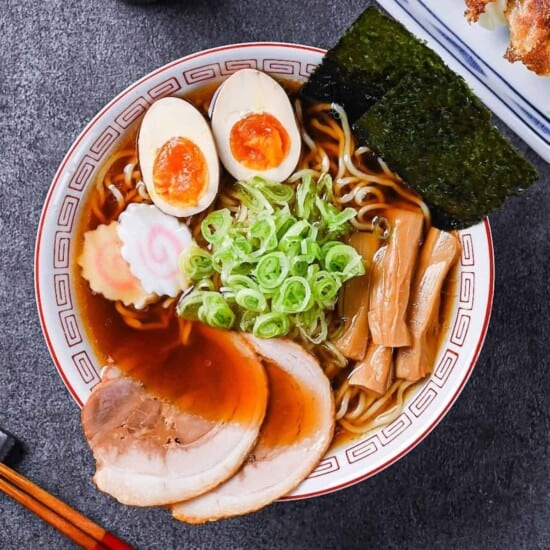



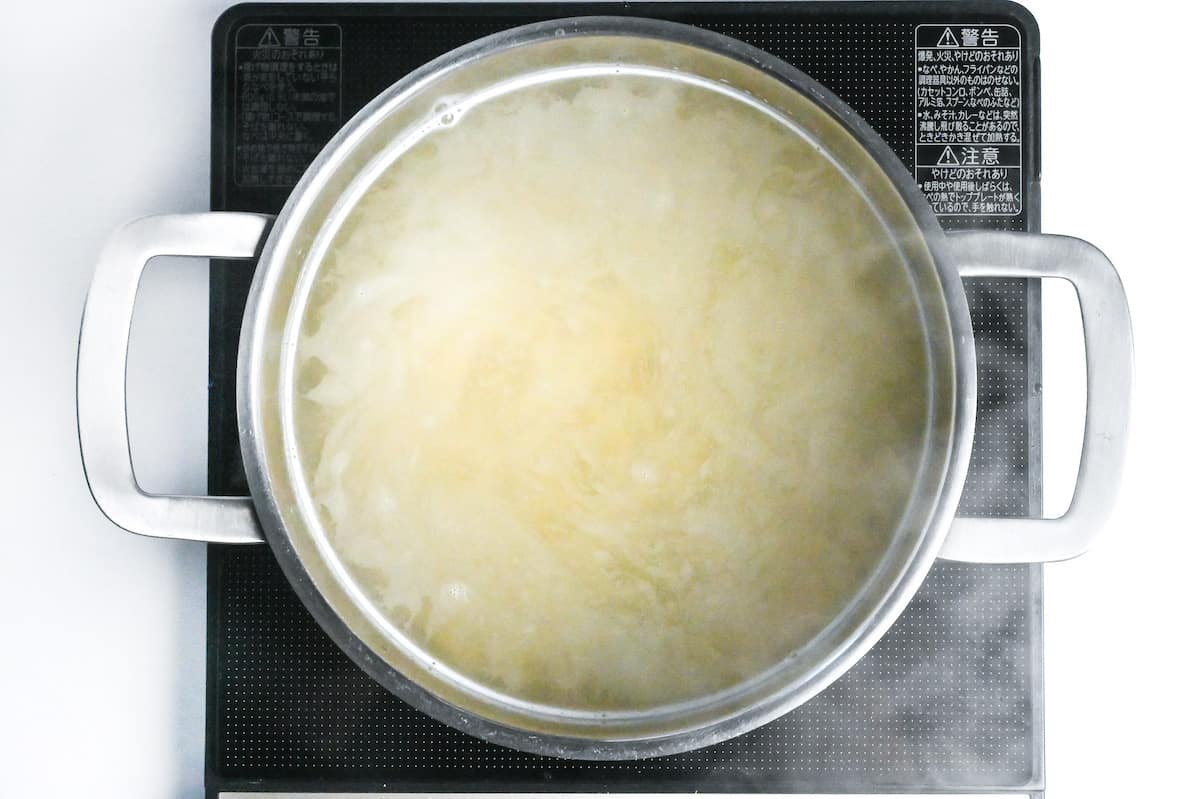
I was surprised how good the result was.
I didn’t curl the chashu and I used instant dashi. Also I cooked the chicken I used for the broth first got rid of the scum and then put it in the dashi to cook
Hi Ric,
Thank you for your comment and sharing your picture! Looking great! I’m glad you enjoyed the recipe. 🙂
I also appreciate you sharing your experience and modifications. It will be very helpful to other readers for inspiration!
Yuto